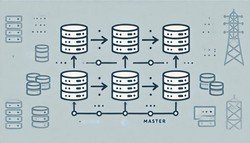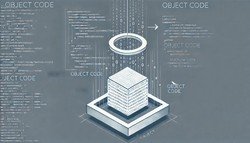RIP (Routing Information Protocol)
 (Representational Image | Source: Dall-E)
(Representational Image | Source: Dall-E)
Quick Navigation:
- RIP Definition
- RIP Explained Easy
- RIP Origin
- RIP Etymology
- RIP Usage Trends
- RIP Usage
- RIP Examples in Context
- RIP FAQ
- RIP Related Words
RIP Definition
RIP (Routing Information Protocol) is one of the oldest distance-vector routing protocols used in networks to determine the best path for data packets. It uses hop count as its primary metric, with a maximum limit of 15 hops to avoid routing loops. RIP updates routing tables at regular intervals and broadcasts the entire table to neighboring routers. This protocol is simple and easy to configure, making it suitable for small to medium-sized networks, but it has limitations in scalability and convergence speed.
RIP Explained Easy
Imagine a group of friends passing messages. Each friend can only tell their immediate neighbors where they can send messages. If the message needs to travel too far (more than 15 people), it doesn’t get delivered. RIP works similarly in computer networks, using simple counts of steps (hops) to decide the best way to send data from one place to another.
RIP Origin
RIP originated from the Xerox PARC’s protocol and was standardized in 1988 under RFC 1058. It became one of the earliest protocols widely used in TCP/IP-based networks and laid the groundwork for more advanced routing methods.
RIP Etymology
The name derives from its function in guiding data packets through “routes” using “information” about paths shared between routers.
RIP Usage Trends
While RIP has been largely replaced by more advanced protocols like OSPF and BGP in large enterprise environments, it is still used in academic, educational, and small business setups where simplicity outweighs the need for scalability and speed. It’s also commonly used for training and learning purposes in network certification courses.
RIP Usage
- Formal/Technical Tagging:
- Routing Protocol
- Distance-Vector Protocol
- TCP/IP Networks - Typical Collocations:
- "RIP configuration"
- "RIP routing table"
- "RIP updates"
- "distance-vector protocol RIP"
RIP Examples in Context
- A small business network may use RIP to maintain connectivity between its local routers.
- In networking labs, RIP is used to teach students basic routing principles.
- Some legacy devices still depend on RIP for simple routing tasks.
RIP FAQ
- What is RIP in networking?
RIP is a distance-vector routing protocol used to determine the best path for data packets in a network. - How does RIP determine the best route?
It uses hop count, with fewer hops indicating a better route. - What is the maximum hop count in RIP?
The maximum hop count is 15; anything beyond that is considered unreachable. - How often does RIP update its routing table?
RIP typically updates every 30 seconds by broadcasting its entire routing table. - Is RIP used in modern networks?
It's mostly replaced by advanced protocols but still used in small or educational networks. - What are the limitations of RIP?
Slow convergence, scalability issues, and a limited hop count. - What version of RIP is most common?
RIPv2, which includes support for subnet masks and authentication. - Can RIP be used in IPv6 networks?
Yes, through RIPng (RIP next generation). - How does RIP handle routing loops?
By using mechanisms like split horizon and hold-down timers. - Is RIP easy to configure?
Yes, its simplicity makes it ideal for beginners learning routing.
RIP Related Words
- Categories/Topics:
- Networking
- TCP/IP Protocols
- Routing
Did you know?
RIP’s simplicity is so iconic that it has been humorously referred to as “Rest In Peace” by network engineers when it fails to converge in complex networks, highlighting its simplicity and limitations.
Authors | Arjun Vishnu | @ArjunAndVishnu

PicDictionary.com is an online dictionary in pictures. If you have questions or suggestions, please reach out to us on WhatsApp or Twitter.
I am Vishnu. I like AI, Linux, Single Board Computers, and Cloud Computing. I create the web & video content, and I also write for popular websites.
My younger brother, Arjun handles image & video editing. Together, we run a YouTube Channel that's focused on reviewing gadgets and explaining technology.
















Comments (0)
Comments powered by CComment